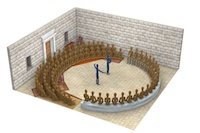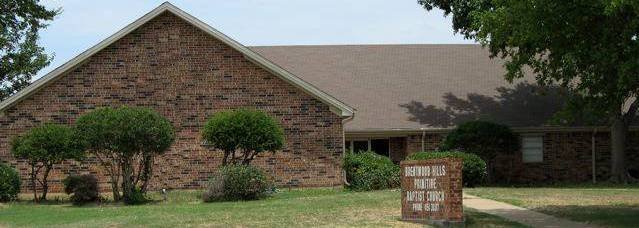Beside Themselves
2 May 2014
“And it came to pass, that after three days they found him in the temple, sitting in the midst of the doctors, both hearing them, and asking them questions. And all that heard him were astonished at his understanding and answers.” (Luke 2:46-47)

Once they realized Jesus was not with the company headed back to Nazareth, it took an additional two days for them to find Him. The first day was spent traveling north. The second day was spent traveling back to Jerusalem. The third day was spent looking around Jerusalem for Jesus. When they found Jesus, He was in the the temple with asking and answering questions with the major religious leaders of the day.
This gathering was most likely a meeting of the Sanhedrin in the Gazith or the “Hall of Hewn Stones." This room was built into the north wall of the temple. This group would have a very large number of doctors of the law and their pupils who would learn in a question and answer format.
The name Sanhedrin comes a Greek word that means “council.” The Great Sanhedrin consisted of 71 Jewish leaders from all over Israel. This acted like a Supreme Court for religious and criminal matters. There was also a lesser Sanhedrin that consisted of 23 men appointed from different cities throughout Israel.
The number 23 is derived from a combination of interpretations of Old Testament scriptures. The minimum number of men needed to have a council was 10. This is based on the number of spies sent into the promised land. A council that has twenty people can be deadlocked so the number has to be at least 21, so a simple majority of 11 could be established. However, heavier matters require 2 or 3 witnesses. Therefore, the court was established at 23 members.
Given the details of events recorded by Luke, this is probably a meeting of the lesser Sanhedrin court. The president at that time was Hillell and the vice-president was Shammai. They would sit in a semi-circle so they could all see one another. Their disciples (students) would sit in three rows in front of them. There were 23 scholars in each row. The closest row to the teachers had the more advanced students. Paul refers to this practice when describing his background.
“I am verily a man which am a Jew, born in Tarsus, a city in Cilicia, yet brought up in this city at the feet of Gamaliel, and taught according to the perfect manner of the law of the fathers, and was zealous toward God, as ye all are this day.” (Acts 22:3)
Jesus was not found hanging around the outside of this group. By the time Joseph and Mary found Him, He had already been taken notice of and was progressing forward in the ranks of the scholars because He was found “in the midst” of them.
If Luke had only recorded that Jesus asked questions it would still be a wondrous thing. How could a poor boy from Nazareth know enough about the law to be able to ask questions deep enough for the council to take notice? But that is not all Jesus did. He also answered questions! We are not told what He was asked or what His responses were. All we know is that the wisdom that this twelve year old displayed left the hearers “beside themselves” in amazement.

